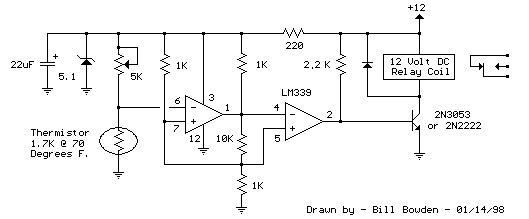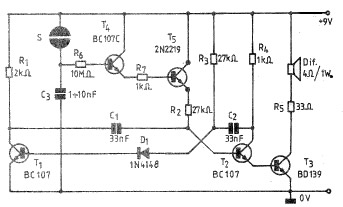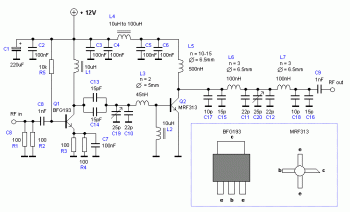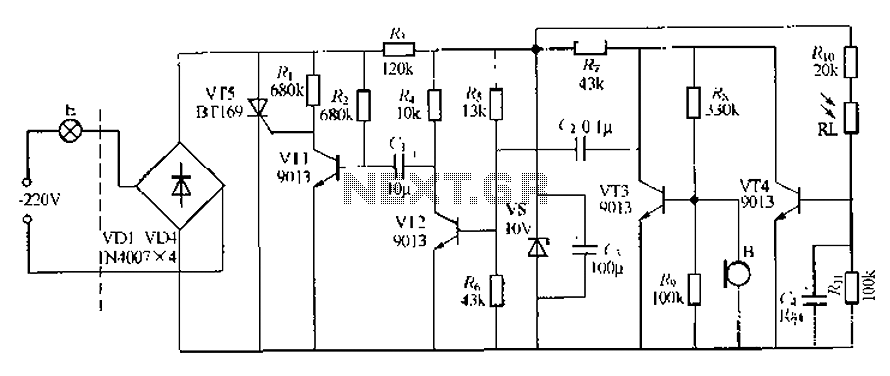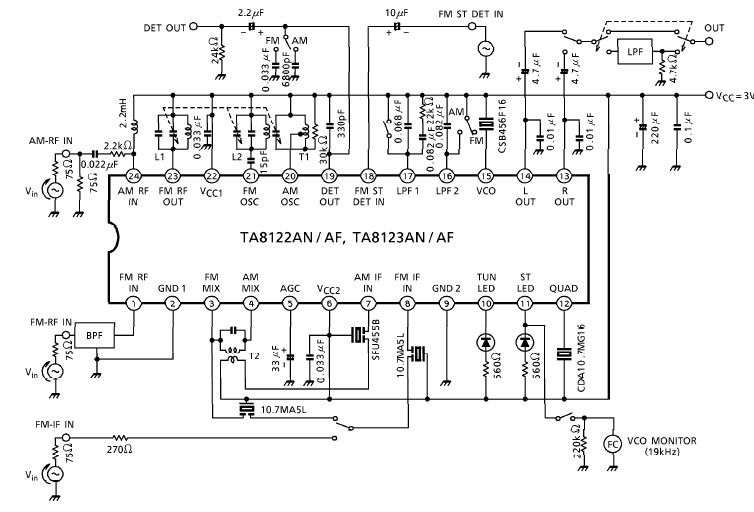
ir receiver circuit

This is a straightforward and easy-to-construct infrared (IR) receiver circuit. The circuit utilizes only a few components and is capable of receiving a 38 kHz carrier signal. The operation of this circuit is simple; whenever the IR LED detects a signal from a 38 kHz transmitter, it will cause the LED in the circuit to blink.
The IR receiver circuit typically comprises several key components, including a photodiode or phototransistor, a resistor, an LED, and a power supply. The photodiode or phototransistor serves as the primary sensor, converting the incoming infrared light pulses from the transmitter into an electrical signal. When the IR LED emits a 38 kHz modulated signal, the photodiode detects this signal and generates a corresponding output.
The circuit's simplicity is one of its main advantages, making it suitable for educational purposes or basic remote control applications. The resistor is often used to limit the current flowing through the photodiode or phototransistor, ensuring its safe operation. The LED serves as an indicator, visually demonstrating the detection of the IR signal.
In terms of configuration, the photodiode or phototransistor is connected to the power supply, and its output is linked to the LED. When the IR signal is received, the circuit allows current to flow through the LED, causing it to blink as an indicator of successful signal reception. The design can be further enhanced by incorporating additional components such as amplifiers or filters, depending on the specific application requirements.
Overall, this IR receiver circuit is an effective and efficient solution for applications requiring basic infrared signal detection, providing a clear visual indication of signal reception through the blinking LED.This is a very simple and easy to make IR receiver circuit. This infrared receiver circuit is using only few components and it is able to receive 38KHz carrier signal. The working of this circuit is simple when ever the IR LED receive any signal from 38KHz transmitter it will blink LED in the circuit.
🔗 External reference
The IR receiver circuit typically comprises several key components, including a photodiode or phototransistor, a resistor, an LED, and a power supply. The photodiode or phototransistor serves as the primary sensor, converting the incoming infrared light pulses from the transmitter into an electrical signal. When the IR LED emits a 38 kHz modulated signal, the photodiode detects this signal and generates a corresponding output.
The circuit's simplicity is one of its main advantages, making it suitable for educational purposes or basic remote control applications. The resistor is often used to limit the current flowing through the photodiode or phototransistor, ensuring its safe operation. The LED serves as an indicator, visually demonstrating the detection of the IR signal.
In terms of configuration, the photodiode or phototransistor is connected to the power supply, and its output is linked to the LED. When the IR signal is received, the circuit allows current to flow through the LED, causing it to blink as an indicator of successful signal reception. The design can be further enhanced by incorporating additional components such as amplifiers or filters, depending on the specific application requirements.
Overall, this IR receiver circuit is an effective and efficient solution for applications requiring basic infrared signal detection, providing a clear visual indication of signal reception through the blinking LED.This is a very simple and easy to make IR receiver circuit. This infrared receiver circuit is using only few components and it is able to receive 38KHz carrier signal. The working of this circuit is simple when ever the IR LED receive any signal from 38KHz transmitter it will blink LED in the circuit.
🔗 External reference
